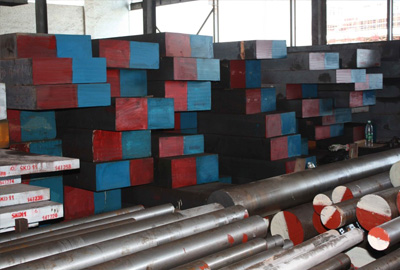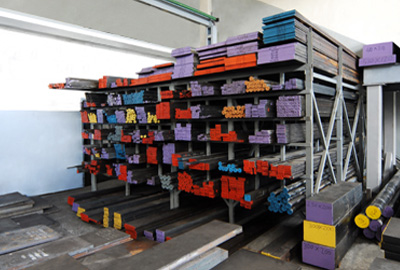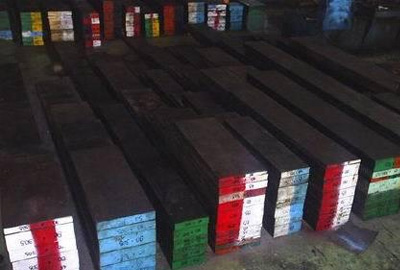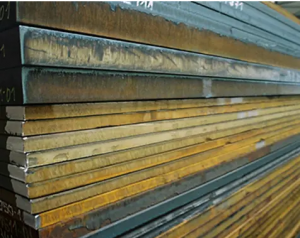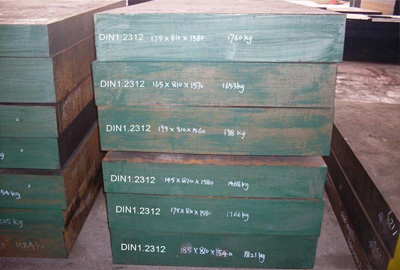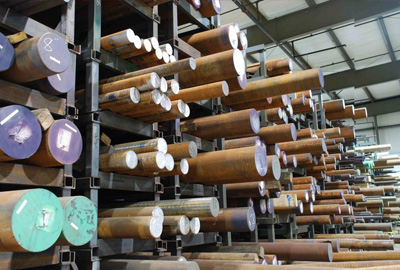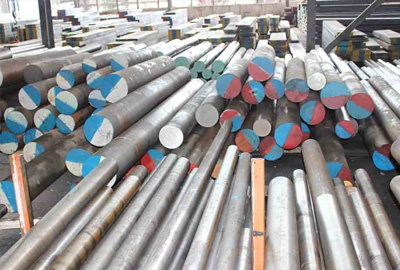Mat.No. 1.2542, DIN 45WCrV7, AISI S1
Short Description:
Designation by Standards Mat. No. DIN EN AISI 1.2542 45WCrV7 - S1 Chemical Composition (in weight %) C Si Mn Cr Mo Ni V W Others 0.50 0.85 0.30 1.05 - - 0.15 1.45 - Description This steel is one of the high duty shock resisting tool steel types. Applications All kinds of cold and hot pneumatic tools, cold and hot cutting shears for plate, pressing dies. Physical properties (avarage values) at ambient temperature Modulus of elasticity [103 x N/mm2]: 210 Density [g/cm3]: 7.90...
Product Detail
FAQ
Product Tags
Designation by Standards
| Mat. No. | DIN | EN | AISI |
| 1.2542 | 45WCrV7 | - | S1 |
Chemical Composition (in weight %)
| C | Si | Mn | Cr | Mo | Ni | V | W | Others |
| 0.50 | 0.85 | 0.30 | 1.05 | - | - | 0.15 | 1.45 | - |
Description
This steel is one of the high duty shock resisting tool steel types.
Applications
All kinds of cold and hot pneumatic tools, cold and hot cutting shears for plate, pressing dies.
Physical properties (avarage values) at ambient temperature
Modulus of elasticity [103 x N/mm2]: 210
Density [g/cm3]: 7.90
Thermal conductivity [W/m.K]: 25.0
Electric resistivity [Ohm mm2/m]: 0.30
Specific heat capacity[J/g.K]: 0.46
Coefficient of Linear Thermal Expansion 10-6 oC-1
| 20-100oC | 20-200oC | 20-300oC | 20-400oC | 20-500oC |
| 11.0 | 12.5 | 13.0 | 13.5 | 14.0 |
Soft Annealing
Heat to 720-750oC, cool slowly in furnace. This will produce a maximum Brinell hardness of 230.
Stress Relieving
Stress relieving to remove machining stresses should be carried out by heating to approx. 650oC, holding for 1-2 hours at heat, followed by air cooling. This operation is performed to reduce distortion during heat treatment.
Hardening
Harden from a temperature of 890-930oC, 860-900oC followed by oil or water quenching. Hardness after quenching is 56-59, 61-64 HRC.
Tempering
Tempering temperature: 150-400oC
Tempering Temperature (oC) vs. Hardness (HRC)
| 100oC | 200oC | 300oC | 400oC |
| 57 (oil) 62 (water) |
57 (oil) 61 (water) |
56 (oil) 58 (water) |
53 (oil) 52 (water) |
Tempering Diagram

Forging
Hot forming temperature: Heat slowly and uniformly to 1000oC. Forge within a range of 1000/800oC reheating if necessary. Cool slowly (preferably in a furnace) to avoid setting up stresses.
Machinability
No data.
Corrosion Resistance
Corrosion resistance of this alloy is better than that of plain carbon steels. However it will rust unless given protective treatment.
Disclaimer
The information and data presented herein are typical or average values and are not a guarantee of maximum or minimum values. Applications specifically suggested for material described herein are made solely for the purpose of illustration to enable the reader to make his own evaluation and are not intended as warranties, either express or implied, of fitness for these or other puposes. There is no representation that the recipient of this literature will receive updated editions as the become available.
FAQ Content
![[0{7)7UAZ(]4W{5TSMC65Q7](https://www.htsteelmill.com/uploads/077UAZ4W5TSMC65Q7.png)
